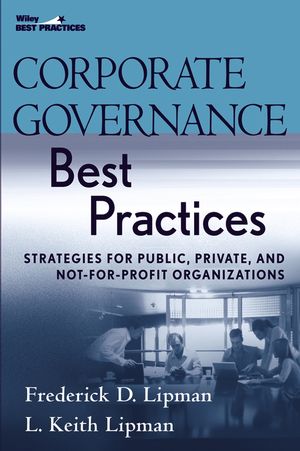Corporate Governance Best Practices: Strategies for Public, Private, and Not-for-Profit OrganizationsISBN: 978-0-470-04379-0
Hardcover
288 pages
September 2006
 This is a Print-on-Demand title. It will be printed specifically to fill your order. Please allow an additional 10-15 days delivery time. The book is not returnable.
|
||||||
Acknowledgments.
PART I: BEST PRACTICES FOR ALL ORGANIZATIONS.
1. Why Is Corporate Governance Important?
2. Summary of Major Corporate Governance Principles and Best Practices.
3. Best Practices to Monitor Risk in Different Organizational Departments.
4. Monitoring and Changing the Corporate Culture.
5. The Internal Audit Function.
6. Compensation Committees of Public, Private, and Not-for-Profit Organizations.
7. Other Committees.
8. Independent Directors and Their Committees.
PART II: INFORMATION TECHNOLOGY CORPORATE GOVERNANCE.
9. IT Content: Best Corporate Governance Practices.
10. IT Security Best Corporate Governance Practices.
PART III: THE PUBLIC COMPANY AUDIT COMMITTEE.
11. Who Can Qualify for a Public Company Audit Committee?
12. Public Company Audit Committee: Personal Liability of Audit Committee Members.
13. Minimum Responsibilities of Public Company Audit Committees.
14. Other Public Company Audit Committee Functions.
15. 30 Best Practice Considerations for the Public Company Audit Committee.
16. Who Is an Independent Auditor?
PART IV: PRIVATE AND NOT-FOR-PROFIT ORGANIZATIONS.
17. Corporate Governance for Family-Owned and Other Private Businesses.
18. Corporate Governance for Not-for-Profit Organizations.
PART V: APPENDIXES.
A: Summary of Sarbanes-Oxley Act of 2002.
B: Risk Assessment Chart under Auditing Standard No. 2.
C: “Uncooking the Books: How Three Unlikely Sleuths Discovered Fraud at WorldCom.”
D: Suggested Corporate Governance Web Site Resources.
Index.



